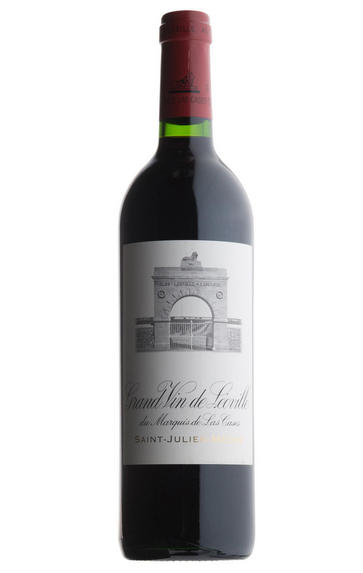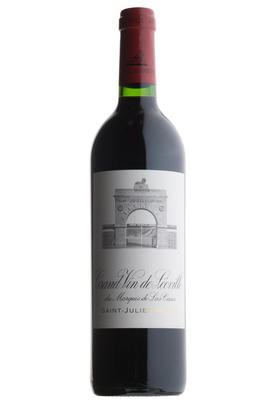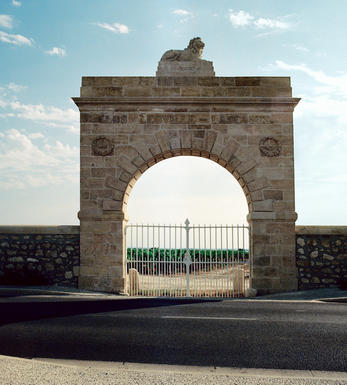
2010 Château Léoville Las Cases, St Julien, Bordeaux

Critics reviews
Robert M. Parker, Jr. - 28/02/2013
Jancis Robinson MW- jancis robinson.com, Apr 2011
James Molesworth – The Wine Spectator – Mar 2011
What I like about tasting at Las Cases is that Jean-Hubert Delon opens one bottle in my presence, and has another already decanted four hours in advance to compare. It is nearly unanimous on each visit that the decanted wine shows better, which probably gives you some insight into the aging potential of Las Cases. It is certainly one of Bordeaux’s longest-lived wines, and seems to have more and more of a character resembling Lafite Rothschild more than its nearby neighbor, Chateau Latour.
96+ Robert Parker- Wine Advocate- Feb 2013
As one would expect, this is a powerful, concentrated wine with 13.7% natural alcohol (compared to 2005's 13.2%). The pH is quite normal at 3.56, and its relatively high total acidity gives it a classic, fresh, yet backward style. Given how long vintages such as 1982, 1986, and I suspect, 2000 are taking to reach maturity, prospective purchasers of this wine should easily invest in a decade of cellaring, although I suspect it will be closer to 15 or more years before it reveals secondary nuances. A good 40- to 50-year wine, it is a dense purple, full-bodied style of Las Cases, with classic sweet kirsch, graphite and black currant fruit as well as hints of new saddle leather and subtle oak. Backward, layered and multi-dimensional, the wine is stunningly rich, but brooding. Forget it at least until 2020 or later.
95-98 Robert Parker- Wine Advocate- May 2011
About this WINE

Chateau Leoville Las Cases
Château Léoville Las Cases is one of the largest and oldest classified growths in the Médoc. It is the largest of the 3 Léoville properties and now without doubt the leading estate in St-Julien.
Léoville Las Cases's 97 hectares of vineyards are superbly sited on gravelly-clay soils with the largest plot being surrounded by a stone wall and stretching between the village of St-Julien and Château Latour. The wine is a Cabernet Sauvignon dominated blend (65%), and is matured in oak barriques (70-80% new) for 18 months.
Léoville Las Cases produces arguably the most exotically perfumed wine in the Médoc and this can be partially attributed to the must being fermented at lower than average temperatures, which leads to its youthful aromatic richness being retained. On the palate it is powerful and concentrated and marvellously well-balanced.
Léoville Las Cases is a 2ème Cru Classé in name but produces 1er Cru Classé quality wines.

St Julien
St Julien is the smallest of the "Big Four" Médoc communes. Although, without any First Growths, St Julien is recognised to be the most consistent of the main communes, with several châteaux turning out impressive wines year after year.
St Julien itself is much more of a village than Pauillac and almost all of the notable properties lie to its south. Its most northerly château is Ch. Léoville Las Cases (whose vineyards actually adjoin those of Latour in Pauillac) but, further south, suitable vineyard land gives way to arable farming and livestock until the Margaux appellation is reached.
The soil is gravelly and finer than that of Pauillac, and without the iron content which gives Pauillac its stature. The homogeneous soils in the vineyards (which extend over a relatively small area of just over 700 hectares) give the commune a unified character.
The wines can be assessed as much by texture as flavour, and there is a sleek, wholesome character to the best. Elegance, harmony and perfect balance and weight, with hints of cassis and cedar, are what epitomise classic St Julien wines. At their very best they combine Margaux’s elegance and refinement with Pauillac’s power and substance.
Ch. Léoville Las Cases produces arguably the most sought-after St Julien, and in any reassessment of the 1855 Classification it would almost certainly warrant being elevated to First Growth status.
Recommended Châteaux: Ch. Léoville Las Cases, Ch.Léoville Barton, Ch Léoville Poyferré, Ch. Ducru-Beaucaillou, Ch Langoa Barton, Ch Gruaud Larose, Ch. Branaire-Ducru, Ch. Beychevelle

Cabernet Sauvignon Blend
Cabernet Sauvignon lends itself particularly well in blends with Merlot. This is actually the archetypal Bordeaux blend, though in different proportions in the sub-regions and sometimes topped up with Cabernet Franc, Malbec, and Petit Verdot.
In the Médoc and Graves the percentage of Cabernet Sauvignon in the blend can range from 95% (Mouton-Rothschild) to as low as 40%. It is particularly suited to the dry, warm, free- draining, gravel-rich soils and is responsible for the redolent cassis characteristics as well as the depth of colour, tannic structure and pronounced acidity of Médoc wines. However 100% Cabernet Sauvignon wines can be slightly hollow-tasting in the middle palate and Merlot with its generous, fleshy fruit flavours acts as a perfect foil by filling in this cavity.
In St-Emilion and Pomerol, the blends are Merlot dominated as Cabernet Sauvignon can struggle to ripen there - when it is included, it adds structure and body to the wine. Sassicaia is the most famous Bordeaux blend in Italy and has spawned many imitations, whereby the blend is now firmly established in the New World and particularly in California and Australia.


Buying options
Add to wishlist
Description
Léoville-Las Cases is often referred as the sixth First Growth and Jean-Hubert Delon has once again demonstrated that, if the 1855 classification were to be redrawn, he would most probably be in the top league.
The 2010 is dark in colour, with lovely concentration on the nose, lots of fresh cassis and blackberries, good focus in mid-palate and fine tannins throughout. It is a bit lighter and fresher in style than the 2009 but with an amazing purity and a never-ending finish. This is a keeper!
(82% Cabernet Sauvignon, 10% Merlot, 8% Cabernet Franc)
Max Lalondrelle, BBR Bordeaux Wine Buyer
wine at a glance
Delivery and quality guarantee